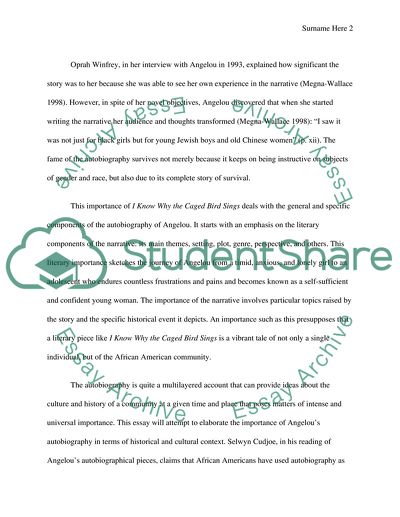Cite this document
(“The Importance of I Know Why The Caged Bird Sings Essay”, n.d.)
Retrieved from https://studentshare.org/miscellaneous/1569469-the-importance-of-i-know-why-the-caged-bird-sings
Retrieved from https://studentshare.org/miscellaneous/1569469-the-importance-of-i-know-why-the-caged-bird-sings
(The Importance of I Know Why The Caged Bird Sings Essay)
https://studentshare.org/miscellaneous/1569469-the-importance-of-i-know-why-the-caged-bird-sings.
https://studentshare.org/miscellaneous/1569469-the-importance-of-i-know-why-the-caged-bird-sings.
“The Importance of I Know Why The Caged Bird Sings Essay”, n.d. https://studentshare.org/miscellaneous/1569469-the-importance-of-i-know-why-the-caged-bird-sings.


